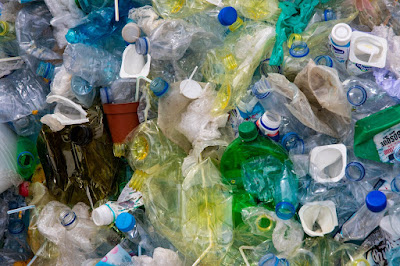The Science Behind Recycling: How Different Materials Are Recycled
Recycling has become an essential aspect of modern society, playing a crucial role in mitigating environmental challenges and conserving valuable resources.
By reusing materials instead of sending them to landfills, we can significantly reduce pollution and energy consumption.
However, not all recycling processes are the same; each material requires unique methods for successful recycling.
Let's learn about the science behind recycling and delve into how different materials like paper, plastic, glass, and metals are recycled.
Understanding these processes will empower us to make more informed decisions and contribute to a sustainable future for generations to come.
Recycling Paper
Paper recycling is one of the most familiar and widely practiced recycling processes worldwide.
The process begins with the collection and sorting of used paper, where contaminants like staples, tape, or plastic coatings are removed. The sorted paper is then shredded into small pieces and mixed with water to create a pulp. The pulp is thoroughly cleaned and refined, eliminating ink and other impurities. Next, the cleaned pulp is processed through a series of screens and rollers to remove excess water and create thin sheets of paper.
These paper sheets are then pressed, dried, and rolled into large rolls, which can be used to make various paper products like newspaper, cardboard, and tissue. Recycling paper saves trees, conserves water and energy, and reduces air pollution, making it an eco-friendly alternative to virgin paper production.
Recycling Plastic
Plastic recycling poses unique challenges due to the variety of plastic types and their different properties.
The recycling process starts with the collection and sorting of plastic waste. Plastics are categorized by their resin codes, which help identify the type of plastic and facilitate appropriate recycling techniques.
The recycling of plastic involves multiple steps, depending on the type of plastic being processed. One common method is mechanical recycling, where plastics are shredded into small flakes, cleaned, melted, and then molded into new products. This process is commonly used for PET bottles, milk jugs, and certain types of packaging.
Another approach to plastic recycling is chemical recycling, where plastics are broken down into their molecular components through various processes like pyrolysis or depolymerization. This method enables the creation of new plastics, fuels, or other valuable chemicals, reducing dependency on fossil fuels.
However, not all plastics can be recycled effectively. Some types, like expanded polystyrene (commonly known as Styrofoam), present challenges due to their lightweight and bulky nature, limiting their recyclability.
Recycling Glass
Glass recycling is a highly efficient process, as glass can be recycled infinitely without losing its quality or purity.
The recycling journey begins with the collection and transportation of used glass bottles and containers to recycling facilities.
At the recycling facility, the glass is sorted by color since different colors contain different additives that can affect the final product. The sorted glass is then cleaned to remove any contaminants like labels or residue.
The cleaned glass is crushed into tiny pieces called cullet. Cullet is then mixed with raw materials like sand, soda ash, and limestone before being melted in furnaces at extremely high temperatures. The molten glass is shaped into new bottles or containers, or it can be molded into various glass products like fiberglass or glass bricks.
Recycling glass significantly reduces the need for raw materials and the energy required to create new glass products, making it an eco-friendly choice that saves resources and reduces greenhouse gas emissions.
Recycling Metals
Metal recycling is vital for environmental sustainability, as mining and refining ores to obtain metals are energy-intensive processes that can contribute to deforestation and air and water pollution. Metal recycling conserves energy, reduces waste, and prevents the depletion of natural resources.
The first step in metal recycling involves the collection and sorting of metal items. Ferrous metals like steel and iron can be easily separated from non-ferrous metals like aluminum, copper, and brass using magnets.
After sorting, metal items are processed to remove any non-metallic components like paint, plastic, or rubber. This is typically done through shredding or crushing.
Once the metals are clean and free from contaminants, they are melted in furnaces to create molten metal. This molten metal can be cast into ingots or shaped into new products. Aluminum, for example, is commonly used in beverage cans, while steel is recycled into construction materials and automobile parts.
Some metals, like aluminum, can be recycled indefinitely without losing their properties. Recycling aluminum requires significantly less energy than producing new aluminum from raw materials, making it one of the most energy-efficient recycling processes.
Recycling is a cornerstone of sustainable living and an effective way to combat environmental challenges. By understanding the science behind recycling and how different materials like paper, plastic, glass, and metals are recycled, we can actively contribute to a cleaner and greener world.
Each recycling process has its unique intricacies, but they all share the same fundamental goal: to repurpose waste into valuable resources. Recycling paper saves trees and conserves water, while recycling plastic reduces the burden on landfills and lessens our reliance on fossil fuels. Glass recycling, being infinitely recyclable, significantly reduces energy consumption and greenhouse gas emissions, making it a sustainable choice for packaging.
Metal recycling, on the other hand, is essential for preserving natural resources and mitigating the environmental impacts of mining and ore processing. By recycling metals, we reduce greenhouse gas emissions and save energy, ensuring a more sustainable future.
As responsible global citizens, it is our duty to participate in recycling initiatives and adopt eco-friendly practices in our daily lives. From diligently sorting recyclables to supporting innovative recycling technologies, every action counts in our collective efforts to protect the environment and create a more sustainable world for generations to come.
(The image source is https://www.pexels.com/photo/close-up-photo-of-plastic-bottles-2547565/ )



Comments
Post a Comment